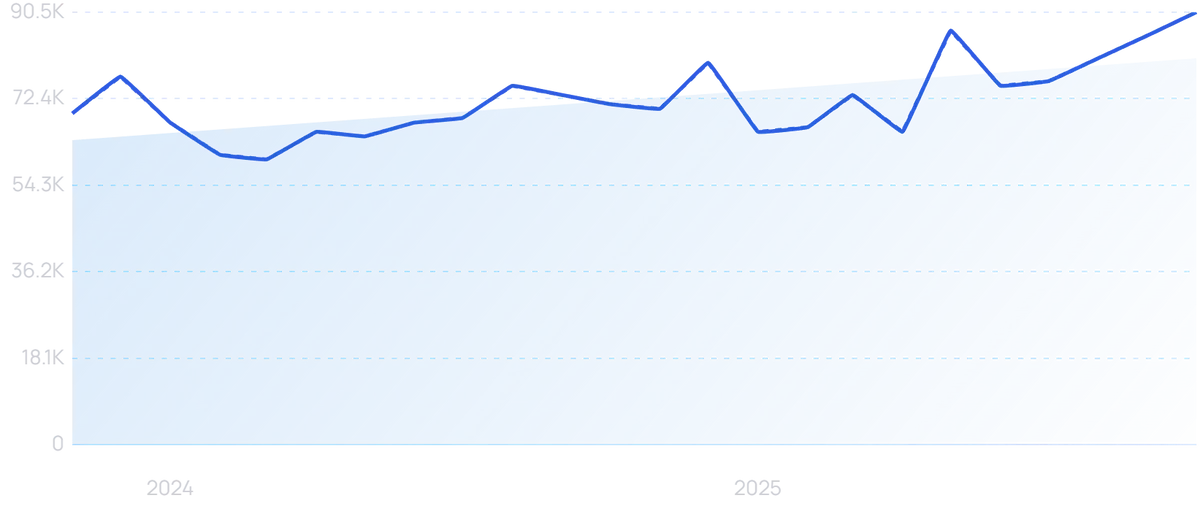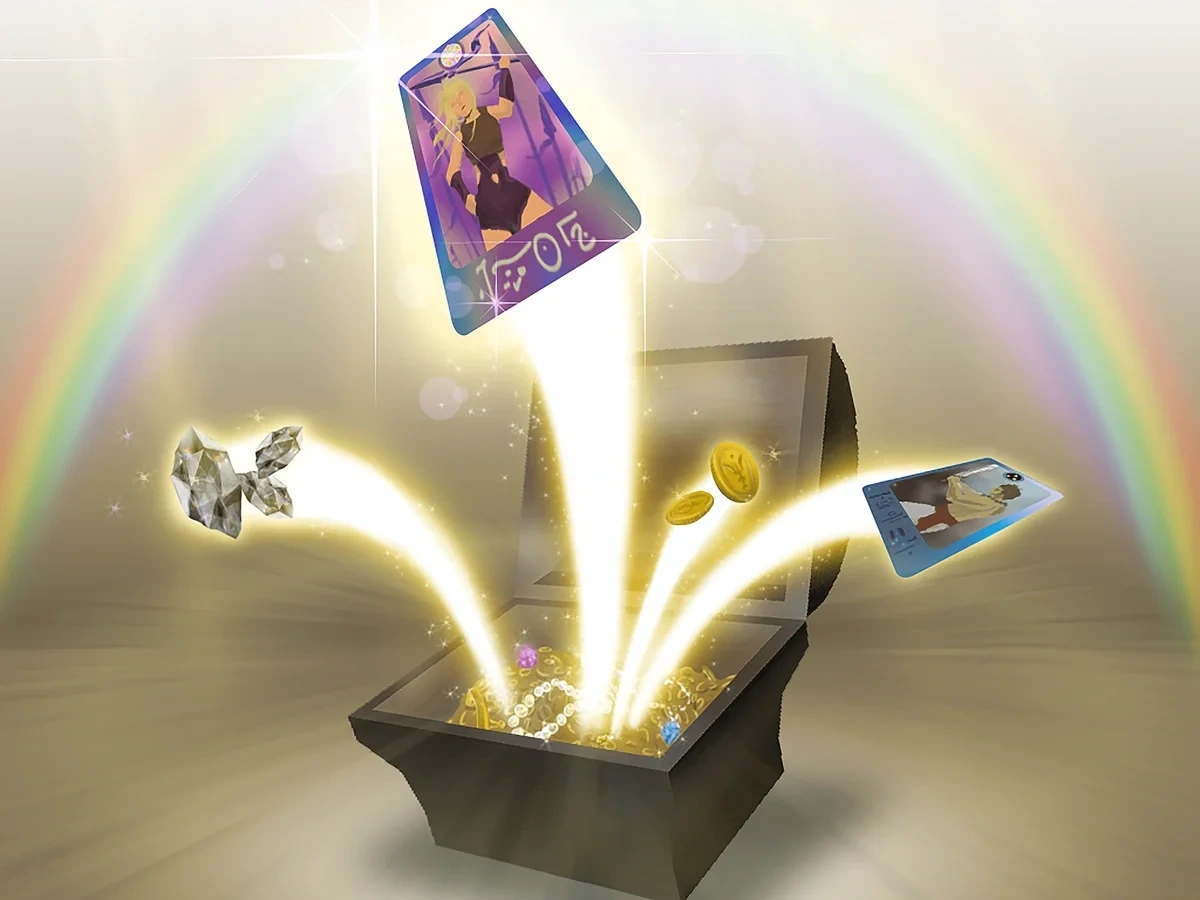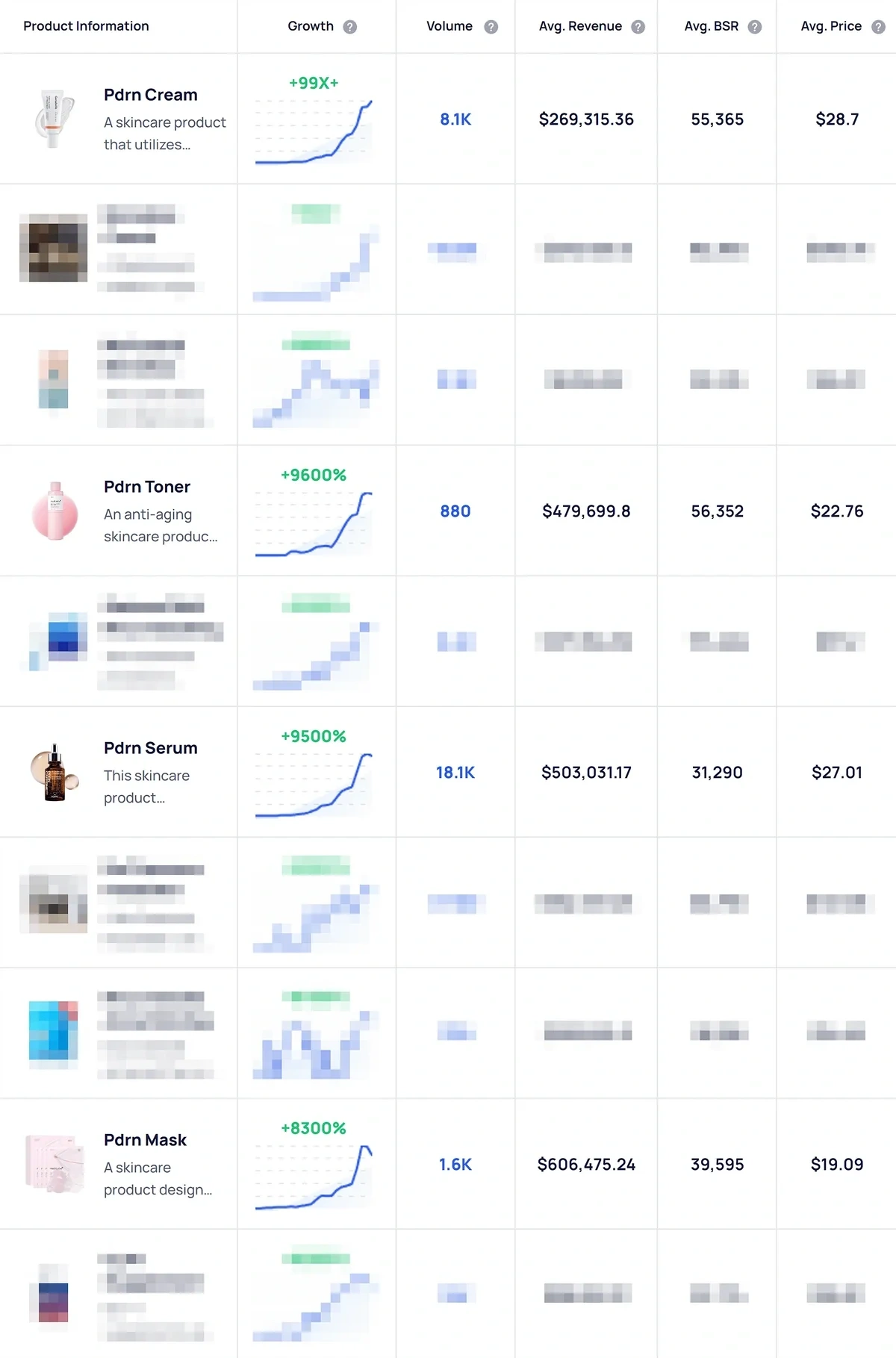
Blind Boxes Boom Ahead of Black Friday as Pop Mart Revenue Soars
Pop Mart, maker of Labubu blind boxes, announced recently that its American revenue had increased by more than 1,200% year-over-year in Q3.
The viral toys have become a must-have ahead of Black Friday and the 2025 holiday shopping season. They feature at number 10 on Google’s Holiday 100, which profiles the top-searched gifts.
Meanwhile, the Labubu craze has brought blind boxes in general to greater prominence. They are now among the standout marketing strategies for this year’s Black Friday event.
“Blind box” searches have increased by 1033% in the last 5 years, and the Exploding Topics algorithm forecasts further growth.
Read on to find out how retail is drawing from the world of gaming to create a new kind of product that is hugely resonating with consumers. I’ll take a look at some of the biggest players in the emerging blind box space, and explore how TikTok and other social media are fueling the trend.
What Are Blind Boxes?
A blind box or mystery box is a sealed package containing a surprise item. The buyer typically knows the general category of product, but the specifics are only revealed when they open the box.
These boxes can be “blind” to a greater or lesser extent. Collectibles brand NECA offers boxes in the broad-brush categories of “pop culture”, “sci-fi”, and “horror”, labels that provide only minimal clues about the potential contents.
“NECA” searches have increased by 31% in the last 2 years.
For example, in an unboxing video for one of NECA’s pop culture blind boxes, the contents include everything from a Golden Girls figurine to an Earl Sinclair toy from the 1990s TV show Dinosaurs.
The most popular example of the blind box phenomenon, the Labubu, is not really that blind at all by comparison.
After all, consumers know that they will get a Pop Mart Labubu doll. The only mystery is which figurine is inside the box.
But collectibles like these are highly suited to blind boxes.
Despite being nominally similar, Labubus vary significantly in both desirability and value: consumers are attracted to the possibility of finding a rare item, with the guaranteed safety net of at least securing one of the figurines.
The most sought-after Labubus have sold for in excess of $10,000 on the resale market. One giant Labubu sold for $170,000 at a specialist auction event in Beijing.
Pop Mart’s surge
Labubu blind boxes have proved massively lucrative for their Chinese seller, Pop Mart.
The retailer has actually had a permanent presence in the US since September 2023, when it launched a store at the American Dream Mall in New Jersey.
But the recent success of its Labubus has enabled significant further expansion. On October 27, the newest physical Pop Mart location was launched at the Mall of America in Minnesota.
There are now around 40 Pop Mart stores in the US (compared to roughly 400 in China).
While down from an August peak of nearly 100,000, “Pop Mart store” still receives more than 40,000 searches per month. Interest is up 2,000% in 2 years.
As well as a YoY revenue hike of 1,265%-1,270% in America, the company has reported a 735%-740% leap in Europe (and other regions outside of America, Asia Pacific, and China).
The recent success of the toys in Europe has led to Pop Mart opening numerous UK stores. A new store in Manchester was opened in August, attracting queues of up to 5 hours.
Pop Mart is set to open its biggest physical UK retail store in Liverpool before the end of the year, and is said to planning to open a store in Leeds.
The “Loot Box” of Retail
Gamers are the ones who should be least surprised by this recent blind box phenomenon. In fact, they have been waiting for retail to catch up.
The retail industry has been circling around the idea of blind boxes for a long time. The Exploding Topics Pro newsletter was highlighting subscription boxes way back in February 2021.
Sign up to Exploding Topics Pro now to get these emails weekly, as well as access to our full database of trending products, startups, and search terms. We’ve been super-early to huge trends like air fryers, snail mucin, pickleball, and hundreds more.
Typical subscription boxes share some similarities with blind boxes. Consumers sign up to boxes with a specific category (e.g. world candy), and the month-to-month content then comes as a surprise.
But the concept is only now coming to maturity in the form of blind boxes. And they are effectively real-world “loot boxes”.
Searches for “loot boxes in games” have increased by 7200% in the last 5 years.
Loot boxes are an increasingly ubiquitous part of video games. Paid for with either in-game or real-world currency, they generally contain items or skins that can be applied to characters.
They have been a prominent part of the gaming landscape since 2008 at the latest. That’s when EA first introduced its FIFA Ultimate Team game mode, built around pack-opening dynamics.
But it’s believed that the first example traces all the way back to MapleStory in 2004.
Like blind boxes, the contents of a loot box are unknown when the player makes the purchase. As a result, loot boxes have attracted controversy and even bans in some countries (e.g. Belgium), given that they can be viewed as a form of unregulated gambling.
But throughout most of the world, they are a major part of the gaming experience. More than 70% of Steam games today earn revenue through loot box purchases.
Psychologically speaking, loot boxes are associated with dopamine spikes. The cliffhanger effect and near-miss impact drive further purchases.
The psychologically rooted impulse to keep buying can also be observed with real-world blind boxes.
27-year-old Californian Dana Nguyen told The Guardian she had spent more than $4,000 on Labubus between January and August this year. She described the sensation when opening the boxes as “straight gambling”.
Pop Mart itself previously commissioned a study that found that 70% of pop toy consumers would purchase 3 or more blind boxes to try and get the toy they want.
Such is the attraction of repeat purchases, China has banned blind box sales to children under 8 years old while requiring parental consent for older children to make purchases.
As the concept soars in global popularity, lawmakers worldwide will have to grapple with if and how they want to protect children from the appeal of blind boxes. Because there is no question that they keep buyers coming back for more, in much the same way as loot boxes in video games.
The TikTok Unboxing Effect
As well as being engineered to appeal to the brain chemistry of customers, blind boxes are also increasingly popular among creators, especially on TikTok.
That’s because blind boxes are perfectly suited to unboxing videos.
“Unboxing video” searches have increased by 192% in the last 5 years.
This is a hugely popular video format regardless of the product in question. According to Semrush Keyword Analytics for YouTube, there are 318,000 monthly YouTube searches for “unboxing”.
“Unboxing” is also one of the most popular TikTok searches. There are 15.8 million posts under the unboxing hashtag.
And unboxing videos truly come into their own in the case of Labubus and blind boxes in general. Unlike with most other products, creators genuinely do not know what they are getting and can react organically in a way that will engage their audience.
Viewers get a slice of the dopamine hit they would get from buying a blind box just by watching the outcome of the unboxing (triggered by “mirror neurons” in the brain, which fire regardless of whether an act is being performed or observed). It keeps them engaged, which in turn benefits the creators.
“Labubu unboxing” specifically attracts more than 100,000 YouTube searches per month. And the top Labubu unboxing videos on TikTok have reached more than 5 million views.
Completing the virtuous cycle for retail, engaged viewers may also be influenced to go out and buy the boxes (or their specific contents) for themselves, especially as Black Friday approaches. A survey from last year’s holiday season found that more than half of consumers got gift inspiration from TikTok unboxings and reviews.
Blind Boxes Will Outlast Pop Mart Labubus
The Labubu phenomenon certainly isn’t over. Between the soaring US sales figures and the no.10 spot on Google’s Holiday 100, interest clearly remains high.
However, while Pop Mart will undoubtedly hope to build on this huge momentum in new ways, including the opening of its new global retail locations, Labubu blind boxes have the hallmarks of a craze.
Already, there are early signs of a downturn in interest. The resale market is faltering, the Pop Mart share price is down more than 35% from an August peak, and searches have dipped.
“Labubu blind box” searches are already way down from an August peak, and the Exploding Topics algorithm expects volume to taper off entirely.
But blind boxes in general may well be here to stay.
A whole host of other brands are trending upward on the back of blind box offerings.
SMISKI is another blind box figurine brand.
“SMISKI” searches have increased by 6,500% in the last 5 years, and 450% in the last 2 years.
Its range of collectible glow-in-the-dark figures saw a steep rise in searches throughout 2024. And crucially, interest now appears to be settling at a sustained high level (over 800,000 searches per month).
The same Japanese parent company, Toru Soeya, also makes figurines known as Sonny Angels. Again, these are sold in blind boxes.
“Sonny Angels blind box” searches have increased by 96% in the last 2 years.
There are more than 150,000 TikTok posts under the Sonny Angel hashtag. Last year, overwhelming demand sparked a worldwide shortage, which spawned a gray market with markups of up to 3,000%.
As for Pop Mart itself, its blind box strategy extends beyond just Labubus. Searches for “Hirono,” another Pop Mart character, are trending upward.
“Hirono Blind Box” searches have risen by 311% in the last 2 years.
Pop Mart also makes Skullpanda toys. Each range of figurines is known internally as an IP, with new ones ready to come to prominence as and when Labubu interest starts to die down.
Blind boxes for more than just toys
It’s not all about collectible figurines, even if these toys lend themselves especially well to the blind box mechanism. Ahead of Black Friday, all kinds of brands could consider using blind boxes as a marketing technique.
More “traditional” brands like cookware company Le Creuset are turning to blind boxes to clear out excess stock. The “Factory to Table” box promises $300+ worth of product for just $50, although it is currently only sold at special in-person events.
“Factory to table” searches have risen by 455% in the last 5 years.
Beauty brands are also getting in on the act. P Louise, which once sold $2 million worth of product in a single 12-hour TikTok live stream event, has started to offer blind make-up boxes to US consumers.
Meanwhile, some retailers are putting together blind boxes of products from multiple different brands. UK retailer HMV markets mystery boxes of random pop culture items that may include wall art, drinkware, and other assorted accessories themed around the film, TV, and gaming sectors.
There are also specialist liquidator brands that buy up excess stock from major companies and sell them to consumers as blind boxes.
“Liquidation store” searches have risen by 233% in the last 5 years.
Liquidation.store sells mystery boxes in various general categories. There are boxes dedicated to haircare, arts and crafts, pets, beauty, household, and more.
Finally, particularly ahead of Black Friday and the holiday season, it’s worth briefly considering how advent calendars play into this trend.
Non-chocolate advent calendars arguably paved the way for the current explosion in blind boxes. Beauty-themed calendars have been popular for multiple years now, with the surprise element and potential for unboxing videos driving the interest.
“Beauty advent calendar” has seen gradually bigger search peaks in each of the last 4 years.
There are 1.2M TikTok posts under the advent calendar hashtag. The top unboxing videos can attract in excess of 3.5M likes.
With blind boxes now entering into the mainstream, the market for non-traditional advent calendars could be bigger than ever in the lead-up to Christmas 2025, as creators and consumers alike chase the thrill of the unknown.
Incorporate Blind Boxes Into Your Black Friday and Long-Term Strategies
The success of Pop Mart and Labubus is really a story about the rapid rise of blind boxes.
As a brand or retailer, it’s well worth exploring how you can incorporate blind boxes into your Black Friday marketing.
And beyond that, blind boxes could become a new fixture in the world of retail. The popularity of loot boxes in gaming provides the blueprint for a new, compelling form of consumerism.
The dedicated Exploding Topics product database is invaluable for finding items that will really capture consumer attention. For instance, a quick look at current high-growth products suggests a PDRN blind box would work well for beauty retailers.
Sign up to Exploding Topics today to get more insights into emerging e-commerce trends.
Stop Guessing, Start Growing 🚀
Use real-time topic data to create content that resonates and brings results.
Exploding Topics is owned by Semrush. Our mission is to provide accurate data and expert insights on emerging trends. Unless otherwise noted, this page’s content was written by either an employee or a paid contractor of Semrush Inc.
Share
Newsletter Signup
By clicking “Subscribe” you agree to Semrush Privacy Policy and consent to Semrush using your contact data for newsletter purposes
Written By


James is a Journalist at Exploding Topics. After graduating from the University of Oxford with a degree in Law, he completed a... Read more


















